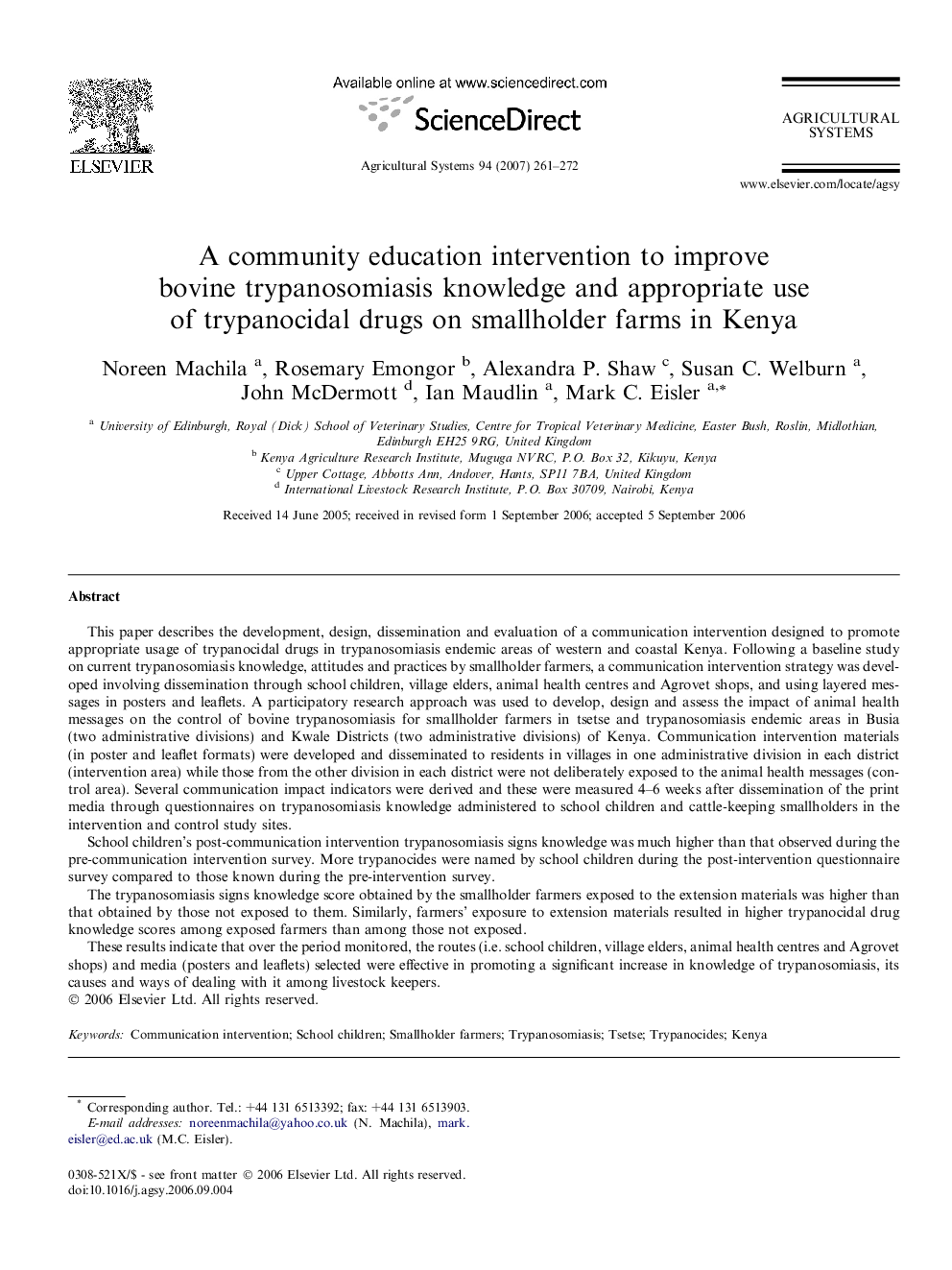| Article ID | Journal | Published Year | Pages | File Type |
|---|---|---|---|---|
| 4491956 | Agricultural Systems | 2007 | 12 Pages |
This paper describes the development, design, dissemination and evaluation of a communication intervention designed to promote appropriate usage of trypanocidal drugs in trypanosomiasis endemic areas of western and coastal Kenya. Following a baseline study on current trypanosomiasis knowledge, attitudes and practices by smallholder farmers, a communication intervention strategy was developed involving dissemination through school children, village elders, animal health centres and Agrovet shops, and using layered messages in posters and leaflets. A participatory research approach was used to develop, design and assess the impact of animal health messages on the control of bovine trypanosomiasis for smallholder farmers in tsetse and trypanosomiasis endemic areas in Busia (two administrative divisions) and Kwale Districts (two administrative divisions) of Kenya. Communication intervention materials (in poster and leaflet formats) were developed and disseminated to residents in villages in one administrative division in each district (intervention area) while those from the other division in each district were not deliberately exposed to the animal health messages (control area). Several communication impact indicators were derived and these were measured 4–6 weeks after dissemination of the print media through questionnaires on trypanosomiasis knowledge administered to school children and cattle-keeping smallholders in the intervention and control study sites.School children’s post-communication intervention trypanosomiasis signs knowledge was much higher than that observed during the pre-communication intervention survey. More trypanocides were named by school children during the post-intervention questionnaire survey compared to those known during the pre-intervention survey.The trypanosomiasis signs knowledge score obtained by the smallholder farmers exposed to the extension materials was higher than that obtained by those not exposed to them. Similarly, farmers’ exposure to extension materials resulted in higher trypanocidal drug knowledge scores among exposed farmers than among those not exposed.These results indicate that over the period monitored, the routes (i.e. school children, village elders, animal health centres and Agrovet shops) and media (posters and leaflets) selected were effective in promoting a significant increase in knowledge of trypanosomiasis, its causes and ways of dealing with it among livestock keepers.
